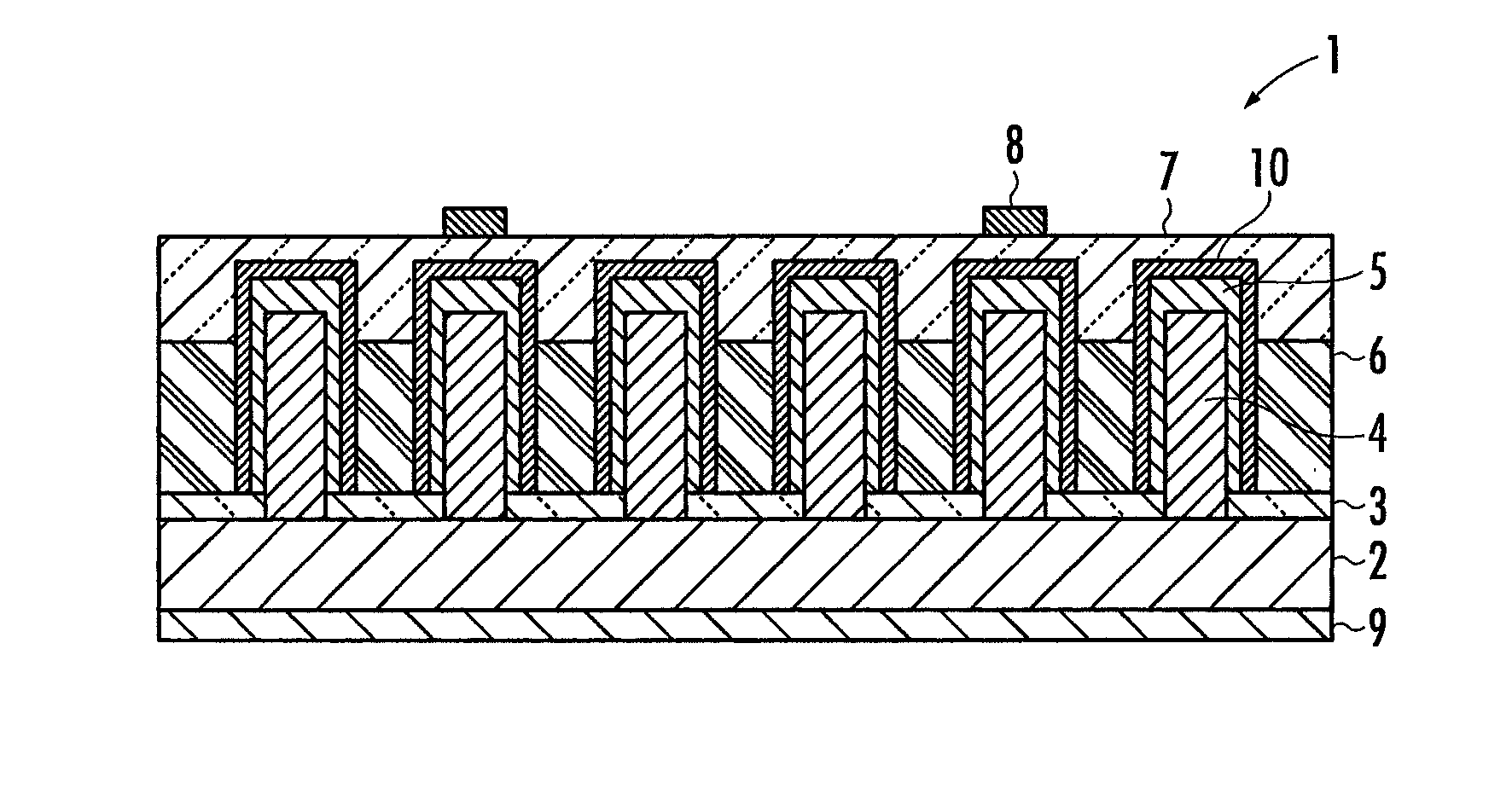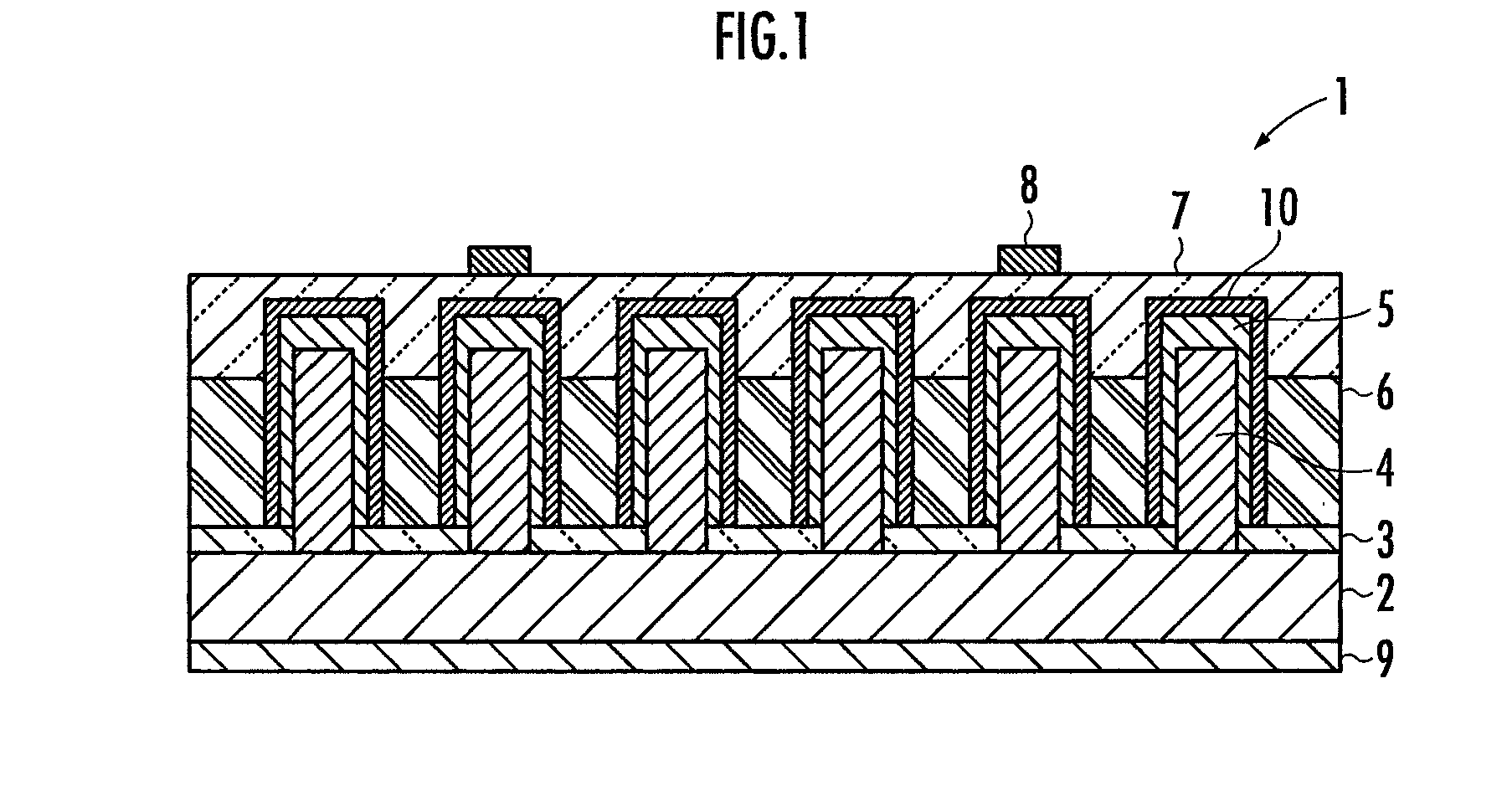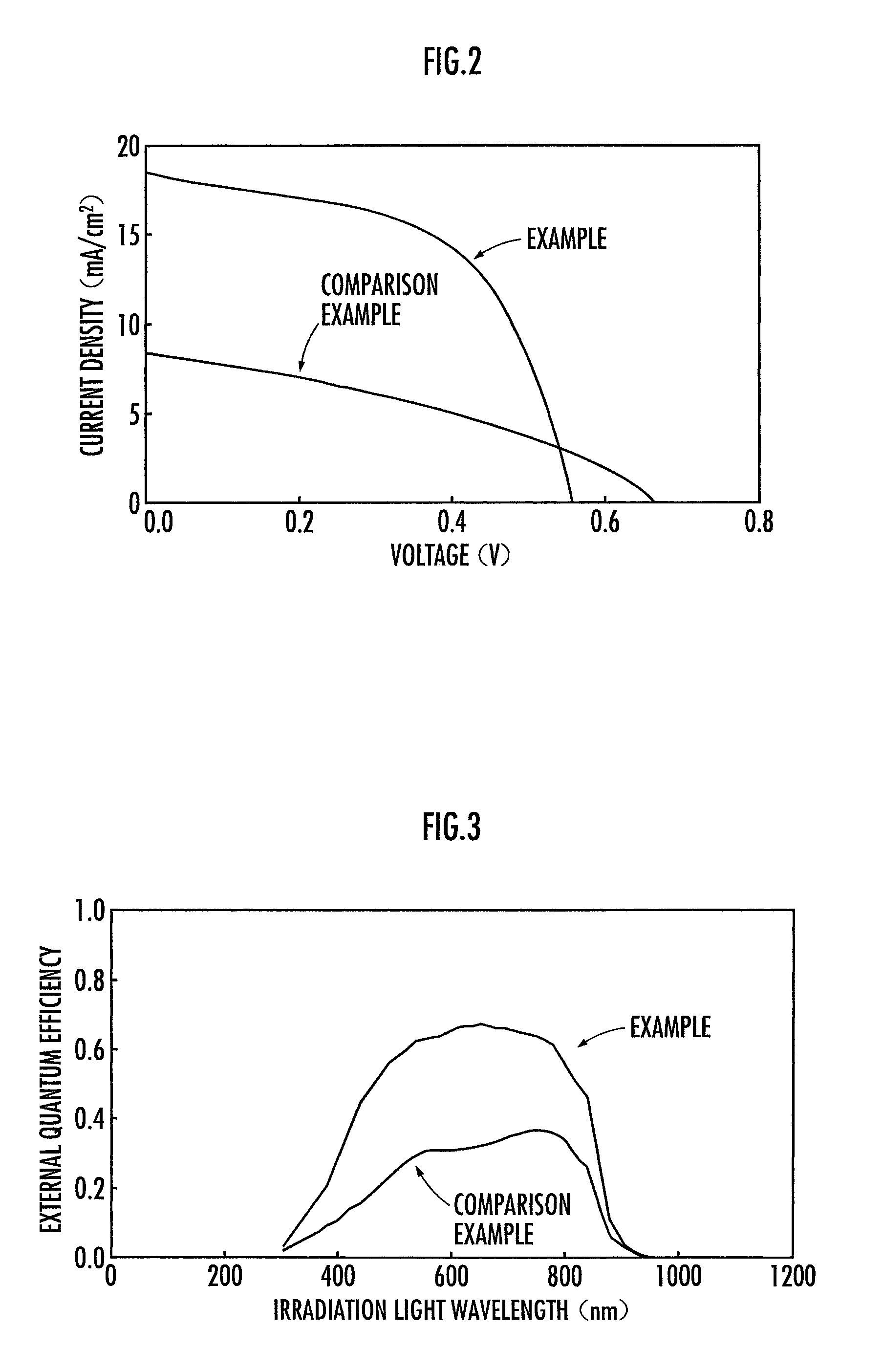Nanowire Solar Cell and Manufacturing Method of the Same
a solar cell and nanowire technology, applied in the field of nanowire solar cells, can solve the problems of inability to obtain sufficient photoelectric conversion efficiency, inability to manufacture devices capable of generating practical electric power, temperature cannot be raised, etc., to achieve the effect of preventing recombination of excitons, preventing contamination, and improving photoelectric conversion efficiency
- Summary
- Abstract
- Description
- Claims
- Application Information
AI Technical Summary
Benefits of technology
Problems solved by technology
Method used
Image
Examples
Embodiment Construction
[0030]Next, an embodiment according to the present invention will be described with reference to the accompanying drawings.
[0031]First, a nanowire solar cell 1 of a present embodiment will be described with reference to FIG. 1. The nanowire solar cell 1 comprises an amorphous SiO2 coating 3 formed on an InP (111) A substrate 2, and a nanowire p-type InP semiconductor 4 formed on the InP (111) A substrate 2 exposed from the amorphous SiO2 coating 3. The nanowire p-type InP semiconductor 4 comprises an n-type InP semiconductor 5 along the surface shape thereof, and an i-type InP semiconductor (not shown) is provided between the p-type InP semiconductor 4 and the n-type InP semiconductor 5. Here, the nanowire solar cell 1 has a core shell structure in which the p-type InP semiconductor 4 is used as the core and in which the i-type InP semiconductor and the n-type InP semiconductor 5 are used as the shell.
[0032]The nanowire solar cell 1 comprises a transparent insulating material 6 fill...
PUM
| Property | Measurement | Unit |
|---|---|---|
| Voc | aaaaa | aaaaa |
| transparent | aaaaa | aaaaa |
| semiconductor | aaaaa | aaaaa |
Abstract
Description
Claims
Application Information
 Login to View More
Login to View More - R&D
- Intellectual Property
- Life Sciences
- Materials
- Tech Scout
- Unparalleled Data Quality
- Higher Quality Content
- 60% Fewer Hallucinations
Browse by: Latest US Patents, China's latest patents, Technical Efficacy Thesaurus, Application Domain, Technology Topic, Popular Technical Reports.
© 2025 PatSnap. All rights reserved.Legal|Privacy policy|Modern Slavery Act Transparency Statement|Sitemap|About US| Contact US: help@patsnap.com



